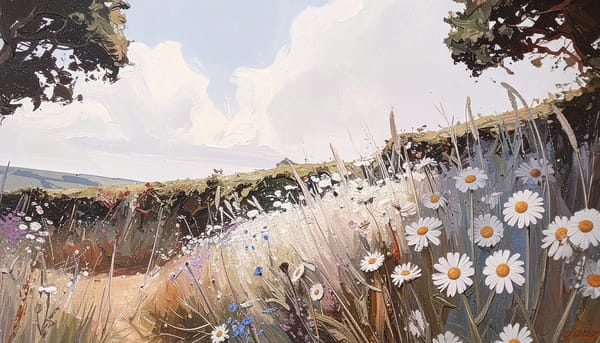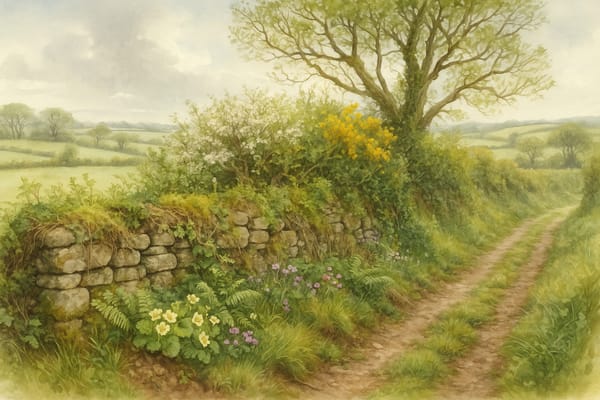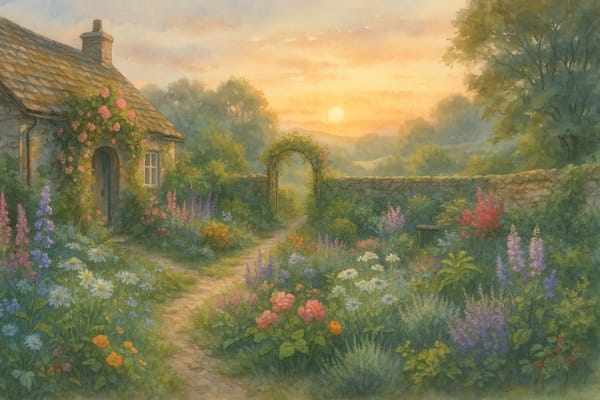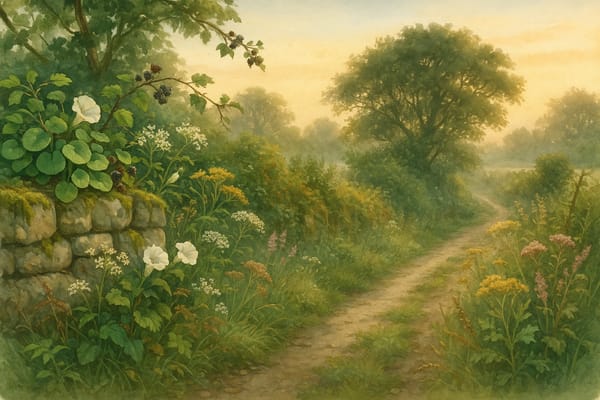There’s a quiet revolution unfolding in the hedgerows and wild corners of Cornwall — a revival of gardening not merely for beauty, but for life itself. As concern grows for the fate of pollinators and wildlife, more gardeners are embracing a richer, wilder approach: creating spaces that nourish bees, butterflies, birds, and beetles while weaving natural beauty into everyday life.
In Cornwall, where rugged coastlines meet lush valleys and ancient hedges thread through the land like living history, this approach feels especially at home. The region’s unique native flora — shaped by centuries of wild weather and Celtic tradition — offers a powerful foundation for wildlife-friendly gardens.
Pathways of Life: The Pollinator Corridor
Imagine a bee’s-eye view of your garden. Are there stepping stones of nectar-rich flowers leading from one corner to another — and beyond, to neighbouring gardens, parks, or verges? Pollinator corridors connect fragmented wild spaces, allowing bees, butterflies, and hoverflies to forage, nest, and thrive across the landscape.
In Cornwall, community projects like the Pollinator Pathway echo this principle, linking gardens, verges, and hedgerows in living chains of wildflowers. A corridor might be as simple as a drift of common knapweed by the gate, oxeye daisies along a driveway, or a wild verge left to bloom with clover, bird’s-foot trefoil, and red campion. These small choices, multiplied across neighbourhoods, can reverse local declines in pollinator populations — especially when chemical-free.
The Bug Bank: A Refuge in the Grass
Not all garden heroes are winged. Ground beetles, ladybirds, solitary bees, and hoverflies need safe places to nest, overwinter, and shelter. Enter the “bug bank” — a gently raised ridge of soil planted with wild grasses and flowers, left uncut through winter. It’s a simple structure that quietly becomes a hive of activity, especially when paired with nearby log piles, stone clusters, or unkempt corners. In larger plots, these beetle banks mimic the ancient Cornish practice of raised hedgebanks, blending farming wisdom with conservation science.
Bird Havens: Hedgerows, Haws, and Wild Edges
Cornwall’s traditional field boundaries — those iconic Cornish hedges, part stone, part earth, and always alive — are masterpieces of biodiversity. When planted or maintained with native species like hawthorn, blackthorn, holly, and dog rose, they hum with birdsong, buzz with insects, and ripple with small mammals.
A garden hedgerow offers food, nesting sites, and safe cover. Plant it thickly, let parts grow a little wild, and avoid hard pruning — you’ll be rewarded with autumn hips, winter berries, and a feathered community from wrens to blackbirds. Even a single dense shrub can become a haven if you allow its branches to tangle naturally.
Cornish Plants at the Heart of Wildlife Gardening
Certain native plants hold an especially valuable place in the wild gardener’s palette. Wild marjoram, beloved by bees and butterflies, spills fragrantly over banks. Bird’s-foot trefoil carpets sunny patches, feeding bumblebee queens and butterfly larvae alike. The golden disks of oxeye daisies sway in summer breezes, while knapweed and scabious feed specialist pollinators, including Cornwall’s rare Large Scabious Mining Bee. These plants thrive without pampering — and by planting them, you create a living buffet for wildlife that lasts the whole season.
Rewilding with Care: The Gentle Art of Letting Go
Wildlife gardening isn’t about letting a space go wild without thought — it’s about curating habitats that nature recognises. It means mowing less, ditching chemicals, and accepting a little untidiness: a bramble patch for birds, a nettle corner for butterflies, a seedhead left to stand through winter frost. Water features, even shallow dishes, offer vital drinking spots for insects and birds.
Supporting pollinators and wildlife isn’t just a conservation effort — it’s a joyful, creative practice that brings your garden alive with movement, sound, and colour. You’ll see the same bees return, watch butterflies lay eggs, and wake to birdsong woven into your mornings.
A Garden That Gives Back
Across Cornwall, from cliff-top plots to cottage gardens, people are rediscovering the deep pleasure of gardening for wildlife. It’s a practice steeped in both old knowledge and modern science — a way to honour the land while actively healing it.
By planting native flowers, shaping pollinator corridors, building bug banks, and embracing untamed beauty, you’re not only cultivating a more vibrant garden — you’re becoming part of a landscape-wide effort to restore balance and biodiversity. And in doing so, you’re crafting a garden that gives back, season after season.











